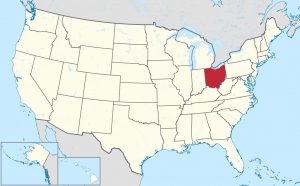 Ohio is not one of the states that lack sunshine. It gets its fair share of sunlight every day. This has helped the state government to impose mandatory laws when it comes to utilizing sunlight. Every state in the USA is trying to come up with reforms and regulations to ensure everyone uses solar panels. Ohio also has stringent rules that make it compulsory for families and institutions to install solar panels in Ohio as soon as possible.
Ohio is not one of the states that lack sunshine. It gets its fair share of sunlight every day. This has helped the state government to impose mandatory laws when it comes to utilizing sunlight. Every state in the USA is trying to come up with reforms and regulations to ensure everyone uses solar panels. Ohio also has stringent rules that make it compulsory for families and institutions to install solar panels in Ohio as soon as possible.
Contents
- 1 Key Takeaways
- 2 Solar Energy Goals
- 3 Solar Power Facts
- 4 Solar Access
- 5 Solar Easements
- 6 Solar Access Laws
- 7 Protecting Solar Access
- 8 Case Study: Residential Solar Installation in Ohio
- 9 Expert Insights From Our Solar Panel Installers About Solar Panel Laws in Ohio
- 10 Experience Solar Excellence with Us!
Key Takeaways
- Ohio has mandatory laws requiring families and institutions to install solar panels to promote solar energy usage in the state.
- The state offers incentives such as a 30% federal tax credit and net metering to make solar panel installation more affordable for residents, with potential savings of up to $56,775 over a lifetime.
- Ohio has implemented solar easements and solar access laws to protect property owners’ rights to install solar panels, even in homeowners associations, ensuring access to sunlight for productive solar panel use.
Solar Energy Goals
The state law requires various utilities in Ohio to provide full retail net metering to customers to measure energy consumption after shifting to solar energy. This is an initiative to help residents of the state understand the difference in energy bills they have to pay before and after installing solar panels. The state government also published a renewable portfolio standard. It states that utilities should be able to obtain at least 12.5% of electricity sold from renewable energy sources within 2027.
This is excellent news for both homeowners and building owners. With a 30% federal tax credit and net metering, the Ohio state government is helping the residents bear the cost of buying and installing solar panels.
Solar Power Facts
Solar power, undoubtedly, will help Ohio residents to save money in the future. Plus, the shift towards solar power is not just about saving money but also about contributing to a greener environment. Imagine the amount of natural resources you can save in the future if you shift to solar power today. The recent law changes also gave an approximate amount that residents may save in the future if they install solar panels.
- $2.73 per watt is the average cost to run a 5 kW solar power system in 2020. The Ohio state government also has various incentive schemes to encourage more people to be a part of this change.
- The government understands that investing in solar panels is expensive for many. However, it promises residents they can earn their money back in only seven years and eight months. You will save enormous money every year if you switch to solar power. Your average lifetime savings may amount to $56,775.
Solar Access
Do you live in a condominium or a planned development? If yes, you may be a part of a homeowners association. Homeowners associations have various rules and regulations to maintain the neighborhood’s aesthetics. They also raise money for shared amenities like tennis courts and swimming pools. These associations can often restrict you from installing solar panels on your property. However, the state government has laws protecting homeowners from these associations. These laws fall into two categories: solar easements and solar access laws.
Solar Easements
Solar easements allow individual property owners to agree with the governing bodies like the homeowners association or the neighbors. This voluntary agreement is for residents not part of a homeowners association. The law makes sure that property owners should get adequate sunlight to keep the solar panels productive. No other family in the neighborhood or the homeowners association can obstruct the sunlight from reaching the solar panels of the property owner.
An easement is like a contract with the neighbors. It specifies many things, such as restricting neighbors from adding another floor to their houses or even requiring them to trim the trees around them. Anything that obstructs the path of the sunlight should be removed with immediate effect.

Solar Access Laws
Solar access laws in Ohio prohibit homeowners associations from stopping their members from installing solar panels on their properties. Some homeowners associations don’t allow members to install solar power, while others disagree with this change. However, the state government of Ohio strictly condemns such practices. It will cancel out the homeowners association rule if the member files a complaint.
Yes, the law allows homeowners associations to provide reasonable restrictions against using solar power systems. However, the association will have to explain logically why it restricted its member(s) from installing solar panels. For example, some of the solar access laws in Ohio allow homeowners associations to decide the design of the rooftop solar array. The heads of the association will determine the appropriate way to install the solar panels. Every house under the association will have to follow the same pattern.
Some homeowners association members also need permission before installing solar panels. This mainly happens due to the location of the house. The owners need to make sure that no wires from the panel dangle in front or around the house. The homeowners association may raise a complaint against the homeowner in such cases.
Protecting Solar Access
The Ohio state government has been trying to implement solar panel laws for the last decade. The last couple of years have gone in their favor because of the widespread availability of solar panels. Plus, solar power systems have become more affordable than before. More residents are now enthusiastic about switching to solar power because they finally understand how much money they can save monthly from energy bills.
Although this effort is still a drop in the ocean, it will help residents realize the importance of conserving energy and why it is crucial to make the most of solar power instead of consuming natural resources.
Case Study: Residential Solar Installation in Ohio
Background
In Columbus, Ohio, Solar Panels Network USA embarked on a residential solar panel installation project with the goal of reducing energy costs and promoting sustainability for a local homeowner. This project was driven by Ohio’s supportive solar laws and incentives.
Project Overview
The project involved the installation of an 8kW solar panel system on a single-family home. Our aim was to take full advantage of Ohio’s net metering policy and the 30% federal tax credit, making the investment both financially viable and environmentally beneficial for the homeowner.
Implementation
Our team began with a detailed site assessment to determine the optimal placement and configuration of the solar panels. The south-facing roof provided ideal conditions for maximum sun exposure, ensuring high efficiency of the photovoltaic panels. We selected high-quality panels known for their durability and energy efficiency.
During the installation process, we adhered strictly to Ohio’s regulations and safety standards. This included setting up the solar panels, inverters, and integrating the system with the home’s existing electrical setup. The installation was completed within a week, minimizing disruption to the homeowner’s daily life.
Results
The implementation of the solar panel system resulted in a significant reduction in the homeowner’s electricity bills. Thanks to Ohio’s net metering policy, the excess energy generated was fed back into the grid, earning full retail credit. This effectively reduced the payback period of the investment and increased the long-term financial benefits.
The homeowner also benefitted from Ohio’s solar access laws, which protected their right to install and maintain the solar panels without obstruction from the homeowners association. This ensured that the panels received unobstructed sunlight, maximizing their efficiency.
Additionally, the environmental impact was notable, with the system significantly offsetting carbon emissions and contributing to a cleaner, greener local environment. The project highlighted the practical benefits of Ohio’s solar laws and demonstrated the potential for residential solar energy in the state.
Summary
This case study in Columbus, Ohio, showcases the tangible benefits of Ohio’s supportive solar laws and incentives for residential customers. By leveraging net metering, federal tax credits, and solar access protections, homeowners can achieve substantial energy savings and contribute to environmental sustainability. Solar Panels Network USA is committed to helping Ohio residents harness the power of solar energy, ensuring both economic and ecological advantages.
Expert Insights From Our Solar Panel Installers About Solar Panel Laws in Ohio
Ohio’s mandatory laws for solar panel installation are a game changer for homeowners. With incentives like the 30% federal tax credit and net metering, residents can see significant savings while contributing to a greener environment.
Lead Solar Installer
Solar easements and access laws in Ohio are crucial for protecting homeowners’ rights to install solar panels. These laws ensure that property owners, even those in homeowners associations, have the legal backing to harness solar energy without unnecessary restrictions.
Senior Solar Technician
The renewable portfolio standard in Ohio sets a clear goal for the state’s energy future. By aiming for 12.5% of electricity from renewable sources, Ohio is paving the way for a more sustainable and cost-effective energy solution for its residents.
Chief Solar Engineer
Experience Solar Excellence with Us!
Trust in Solar Panels Network USA, where our seasoned experts deliver top-quality solar solutions for homes and businesses nationwide. With a legacy of countless successful installations and a commitment to sustainable energy, we’re your reliable partner in the solar journey. Ready for a brighter, eco-friendly future? Call us now at (855) 427-0058 and harness the power of the sun!
Map image by Wikimedia Commons User: TUBS / CC-BY-SA-3.0
About the Author
Solar Panels Network USA stands at the forefront of solar energy solutions, driven by a team of seasoned solar engineers and energy consultants. With over decades of experience in delivering high-quality solar installations and maintenance, we are committed to promoting sustainable energy through customer-centric, tailored solutions. Our articles reflect this commitment, crafted collaboratively by experts to provide accurate, up-to-date insights into solar technology, ensuring our readers are well-informed and empowered in their solar energy decisions.

